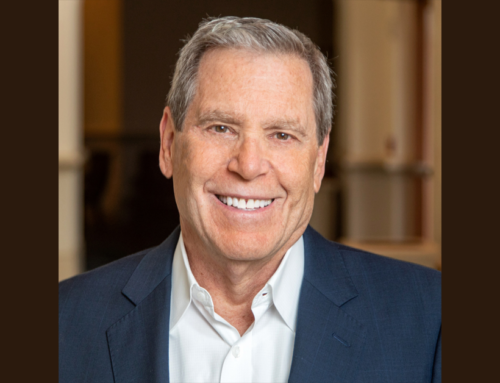Like millions of other people, I watched Lin-Manuel Miranda’s “Hamilton” on Disney+ when it premiered. It was the first time I’d seen the play or listened to the music in its entirety. I know, what planet have I been living on for the last five years!
The show was phenomenal. As I watched it, I was captivated by its inventiveness and spellbinding creativity.
After watching it, I started thinking, “How could Lin-Manuel Miranda be that creative to craft this amazing masterpiece? What is his creative process and how can us mere mortals apply some of his ideas, and other creatives’ ideas, to our work?”
And judging by my Twitter feed, it’s clear that “Hamilton” brought many grown men and women to tears—me too. It was that emotional.
But the emotion in the words, the music, and the performances doesn’t come from someone working under the promise of a paycheck.
Fall in love
The desire for money can drive certain behaviors, but creativity is not one of them. In this 2015 quote from The Atlantic, Miranda shared where the emotional genesis of “Hamilton” came from.
Here’s the thing about artists—their job is to fall in love for a living. Like, you could commission me to go write a historical fiction, a historical musical. If I’m not in love with it and I don’t know how to get myself into the characters, you’re going to be bored to tears by whatever the fuck I write. You can’t assign falling in love, because it takes falling in love to write a musical. I’ve been writing this thing for seven years. That’s longer than pretty much every relationship I’ve ever been in, except for my wife. And that’s what it takes—waking up and knowing you’ve still got challenges within it, and how are you going to crack this problem, and how are you going to compress this section. You’ve got to be able to go into that work lovingly, willingly.
Do you wake up each morning in love with the work you do?
Based on my conversations with advisors over the past 30 years, I’d say many of you don’t.
I find it ironic that the value proposition of many of the coaching programs out there is they will help you “work less and make more money.” They’re focused on helping you put systems and people in place so the business will run mostly without you while you work an average of just two or three days a week.
The idea in those programs is, “We’ll help you work less in your business so you can spend more time doing what you really want to do outside of your business.”
Hmm. My question is, why not find a way to fall in love all over again with being an advisor?
That’s what Miranda is saying. You gotta wake up in love every morning with the work you do.
Neil Diamond said something similar as he described making his 2014 album, “Melody Road.”
There’s no better inspiration or motivation for work than being in love. It’s what you dream of as a creative person. I was able to complete this album — start it, write it and complete it — under the spell of love, and I think it shows somehow.
So let me ask you…are you in love?
For the first 25 years of my career, I was employed by other people. I (mostly) enjoyed the work I did and was paid commensurate with my results. It wasn’t until I turned 50 that I decided “liking my work” was not enough.
So, I quit my job with nothing else lined up. I struggled for the next couple years before figuring out what was going to make me go to bed at night looking forward to getting up in the morning and going to work—my way of describing what “loving my work” meant.
I’m writing this on a beautiful, sunny July 4th while almost everybody else in my town is out picnicking and playing in the water. I’m writing this today not because I have to, but because I love writing this weekly email. (Note, my wife and I are empty-nesters and she can only take so much of me!)
I’m fortunate that I’ve been able to “create” a job and get paid for work that I love doing. But it took me more than 25 years to get to this point. And that leads to a second creativity lesson from Miranda.
Put in the time and do the work
Sometimes we have to make sacrifices for human love. And loving your work is no different.
Miranda shared a story about one day when he was on a train headed to a friend’s birthday party. He had his headphones on and then all of a sudden, the lyric “wait for it” showed up. He started writing it down “and I suddenly see the shape of the whole song.”
The train stops, he goes to his friend’s party and says,
“Hey, what’s up man, Happy Birthday, I gotta go.’ I get on the L train and I write the rest of the song on the way back home from the L to the A back up to 207th street. You have to do that sometimes. You have to say no to your friends to say yes to your work because what are you gonna do, like, lose that idea because you decided to have a drink with your friends? It’s not worth it. Your friend will be there.
Inspiration struck and Miranda tossed the party aside, put in the time, and did the work. Birthing genius requires sacrifice.
In a similar way, Diamond suffers for his art. Billboard magazine wrote, “Diamond has become extremely disciplined about his process. He writes every day, regardless of inspiration or deadlines.”
Diamond doesn’t mince words about putting in the time and doing the work.
It’s terrible because you’re forgoing real life. I’m locked in a room and I should be with my grandson or granddaughters and I can’t be. I’ve had that for the last 45 or 50 years … I’ve missed out for the sake of my music and I understand that, but it doesn’t make it any easier to do.
While Diamond likes being under the spell of love while writing a song, he describes the process of songwriting as, “that’s really hard work and it’s self-discipline. The only time you enjoy writing a song is when you finish it.”
My own personal experience, plus seeing the work ethic of my successful colleagues up close, confirms without a doubt that nothing truly significant is accomplished without putting in the time and doing the work. But when you love what you’re doing, this kind of sacrifice “should never feel like work” says Miranda.
Never run out of approaches
You can’t talk about creativity without talking about hitting a creative “block.” You know, those times when you’re staring at a blank page and you don’t know what to write.
The cliché way to overcome writer’s block is attributed to William Faulkner: “I only write when inspiration strikes. Fortunately, it strikes at nine every morning.” Yes, discipline is one way, as Diamond mentioned.
Miranda described another way when he was speaking at a Fast Company Innovation Festival.
I don’t think of it as a block. I think of it as an approach that is not going to get me all the way there. It comes down to never running out of approaches, and that comes down to building tools in your toolbox. Sometimes you have to sneak attack the page. Craft comes in when the idea doesn’t just drop into your lap and you have to draw from a set of tools that you have developed over the years.
Sometimes you just need to completely “Shake It Up” as The Cars sang to get those creative juices flowing again. That’s what Diamond did in 2005, when he teamed with producer Rick Rubin, best known for his work with hip-hop and alternative rock acts.
Diamond’s resulting album, “12 Songs”, with its spare arrangements and emphasis on songwriting, brought him back to his early days in the 1960s when he was an up-and-coming songwriter. It worked. The album reached #4 in the Billboard ranking and became Diamond’s highest charting album in 25 years.
Each of us has to figure out what works to get us out of the “block.” One of my tools is movement. If I’m stuck, I get up and start walking.
Another tool is diligent notetaking. I’m constantly leaving myself voice messages on my phone that are automatically transcribed to text. These notes get posted to a massive Word doc or my writing software tool.
Thanks to this notetaking, I usually have a decent idea of what I want to write about before I start typing away. And if I’m still stuck, I have hundreds of pages of reasonably well-organized notes to scroll through for inspiration.
Creativity is its own reward
Whether 10 people or 10 million people see your work becomes irrelevant. The satisfaction you derive from becoming so enraptured by an idea will be the only pat on the back you need.
For more on the creative process and how you can adapt lessons from the world’s greatest artists to grow your business, read my post here.





